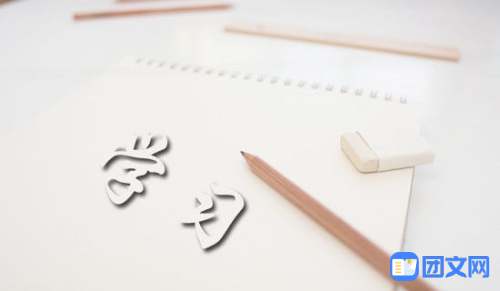小学英语总结
小学英语总结,应届毕业生小编为你整理提供小学英语总结,欢迎阅读参考。

小学英语总结
1.人称代词
主格: I, we, you, she, he, it ,they
宾格: me, us, you, her, him, it, them
形容词性物主代词:my, our, your, her, his, its, their
名词性物主代词: mine, ours, yours ,hers ,his, its, theirs
2.形容词和副词的比较级
(1) 一般在形容词或副词后+er
older, taller ,longer ,stronger, etc
(2) 多音节词前+more
more interesting, etc.
(3) 双写最后一个字母,再+er
bigger, fatter, etc.
(4) 把y变i,再+er
heavier, earlier, etc.
(5) 不规则变化:
well-better, much/many-more, etc.
3.可数词的复数形式
大多数名词+ s : a book –books
以辅音y结尾的名词, y变i加es: a story—stories
以 s, sh, ch 或 x 结尾的名词,加 es :a glass—glasses; a watch-watches
以o 结尾的名词,加s 或es: a piano—pianos ;a mango—mangoes
以f 或 fe 结尾的名词,将f 或 fe 变为ves: a knife –knives ;a shelf-shelves
4.不可数名词(单复数形式不变)
bread, rice, water ,juice etc.
5. 缩略形式
I’m = I am ;you’re = you are ;she’s = she is ;he’s = he is;
it’s = it is ;who’s =who is ;can’t =can not; isn’t=is not ,etc
6. a/an
a book, a peach
an egg, an hour
7. Preposition(介词)
表示方位:on, in ,in front of, between, next to, near, beside, at, behind
表示时间: at six o’clock, at Christmas, at breakfast,on Monday ,on 15th July ,
on National Day, in the evening, in December, in winter
8. 基数词和序数词
one – first; two-second ;twenty-twentieth
9. Some /any(一般情况下陈述句中用some;疑问句和否定句中用any)
I have some toys in my bedroom.
Do you have any brothers or sisters?
10. be 动词
(1) 基本形式: am/are/is
(2) 肯定和否定句 I am(not) from London.
My eyes are(not) small.
My hair is(not) long.
(3)一般疑问句: Am I a Chniese? Yes, you are. No, you aren’t.
Are they American? Yes, they are. No, they aren’t.
Is the cat fat? Yes, it is. No, it isn’t.
11. there be 结构
肯定句: There is a (an)…
There are …
一般疑问句:Is there …? Yes, there is./ No, there isn’t.
Are there…? Yes, there are. /No, there aren’t.
否定句: There isn’t …. There aren’t….
12. 祈使句
Sit down please
Don’t sit down, please.
13. 现在进行时.(通常用“now”)
形式: be + 动词 的ing形式
eg: I am(not) doing my homework.
You/We/They are(not) reading.
He/She/It is(not) eating.
动词 —ing 的形式
大多数动词直接加ing: walk—walking
以 e结尾的动词,去e 加ing: come—coming (see除外,seeing)
以元音加辅音结尾的动词,双写后面的辅音,再加ing:run –running ; swim—swimming
14 一般现在时。通常用 “usually, often, every day, sometimes”。
肯定句:
I go to school on foot every day.
She usually goes to school on foot.
一般疑问句:
Do you jump high? Yes, I do. / No, I don’t.
Does he jump high? Yes, he does. / No, he doesn’t.
否定句:
We don’t go to school on Sundays.
My mother doesn’t like watching TV in the evening.
15. (情态)动词can,must, should 后面直接用动词原形。
eg:
1. I / He / She / They can sing.
2.You should keep quiet in the library.
16. 一般过去时态
(a) be 动词的过去式:
I/He/she/it was(not)….
You/we/they were….
一般疑问句was, were 放在句首。
(b) 动词过去式:
肯定句: I watched cartoons.
She visited the zoo.
一般疑问句: Did you read book last night? Yes, I did. No, I didn’t.
Did she clean the desk just now? Yes, she did. No, she didn’t.
否定句: They didn’t go the the part yesterday.
He didn’t make model ships last week.
(3)动词过去式的变化:
规则动词的变化:
大多数动词,直接加ed: eg. planted,watered,climbed
以e结尾的动词加d :eg. liked
以辅音 y 结尾的动词,y变i,加ed :eg : study—studied
元音加辅音结尾的动词,双写辅音加ed: eg: stop –stopped
不规则动词的变化:
is/am—was,are—were,do—did,have/has—had,make—made,fly-flew/u:/
eat—ate,take—took,run—ran,sing—sang,drink—drank 等等
17. “Wh-” questions.
What are you doing? What colour is it? What time is it? What’s the time?
Which is your watch, the yellow one or the white one?
Who’s the man with a big nose?
Whose bag is it?
When is your birthday?
Where is my ball pen?
Why do you like summer?
How many books are there in the school bag?
How old is the young man?
How much is the toy bear?
How do you go to school every day?
可数名词与不可数名词“分家”
一、可数名词与不可数名词的区别
普通名词所表示的人或事物是可以按个数计算的,这类名词叫可数名词。可数名词分为个体名词(表示某类人或事物中的个体,如worker, farmer, desk, factory等)和集体名词(表示作为一个整体来看的一群人或一些事物,如people, family 等)。假如普通名词所表示的事物是不能按个数来计算的,这类名词就叫不可数名词。不可数名词分为物质名词(表示无法分为个体的物质,如meat, rice, water, milk, orange 等)和抽象名词(表示动作、状态、情况、品质等抽象概念,如work, homework, time, health, friendship等)。
二、 可数名词的家务事
可数名词有单数和复数两种形式。指一个人或一件事物时,用单数形式;指两个或多个人或事物时用复数形式。名词由单数形式变成复数形式的规则如下:
1. 一般的名词词尾直接加-s 。如:
book → books ;room → rooms; house → houses ;day → days
2. 以s, ss, ch, sh, x 结尾的名词,在词尾加-es 。如:
bus → buses ;glass → glasses; watch → watches; dish → dishes ;box → boxes
3. 以”辅音字母+y”结尾的名词,要先将y改为i再加-es。如:
city → cities ;body → bodies;factory → factories
4. 以f 或fe 结尾的名词,要将f或fe改为v再加-es。如:
half → halves; leaf → leaves;knife → knives ;wife → wives
5. 特例 [特例常常考,要记住。]
① child → children
② man → men woman → women; policeman → policemen (规律:man → men)
③ tomato → tomatoes; potato → potatoes
[ 初中英语以o结尾的名词变复数时只有这两个词加-es,其余的当然加-s喽!如:photo → photos ]
④ foot → feet; tooth → teeth [ oo变成ee。]
⑤ sheep, Chinese, Japanese单、复数同形 [变复数时词形不变。]
⑥ people单数形式表示复数意义,要求谓语动词用复数; people的复数形式peoples通常指"多个民族"。
三、 不可数名词的家务事
1. 不可数名词没有复数,当它作句子的主语时,谓语动词要用单数形式。如:
The food is very fresh. 食品很新鲜。
2. 有的不可数名词也可以作可数名词,有复数形式,但他们的意义往往发生变化。如:
water (水) → waters (水域); orange (橘汁) → oranges (橘子)
3. 很多的不可数名词表示泛指时为不可数,表示种类时就可数,但意义大多不发生变化。如:
fruit → fruits ;food → foods; fish → fishes ;hair → hairs
用所给名词的适当形式填空。
1. How many________(sheep) are there on the hill?
2. There is some________(food) in the basket.
3. The baby has only two________(tooth) now.
4. There is a lot of________(water) in the bottle.
5. There are five________(people ) in his family.
6. Let’s take________(photo), OK?
7. I have lots of________(tomato) here.
8. The________(leaf) on the tree turn yellow.
9. The________(child) are playing games on the playground now.
10. Their________(dictionary) look new.
11. I see you have a few white________(hair).
12. They are________(woman) doctors.
13. Can you give me some bottles of ____ (orange), please?
14. There are many________(fox) in the picture.
15. I would like some apple________(juice). I am very thirsty.
参考答案:
1. sheep 2. food 3. teeth 4. water 5. people 6. photos 7. tomatoes 8. leaves 9. children 10. dictionaries 11. hair, hairs 12. women 13. orange 14. foxes 15. juice
名词可数不可数“六注意”
善问大王:Good afternoon, Mr Zhang.名词可数不可数我掌握得不好,请您给我再讲一讲好吗?
Mr Huang:别急!名词可数不可数需要注意六点,下面我就逐一给你道来:
一、可数名词是可以用来计数的名词。可数名词有单数和复数形式。如:desk-desks, apple-apples等。不可数名词是不可以直接用来计数的名词。不可数名词没有复数形式,只有单数形式。如:some bread, a little milk等。
二、单数可数名词表示泛指时,前面要用不定冠词a(an),表示特指时,前面要用定冠词the; 而不可数名词前不能用a(an)修饰,表示特指时,前面一定要用定冠词the。如:
He is a factory worker. 他是一名工人。
No one can see air. 没有人能看见空气。
三、可数名词和不可数名词前都可以用some, any, a lot of, lots of 等来修饰,表示”一些,许多”。如: